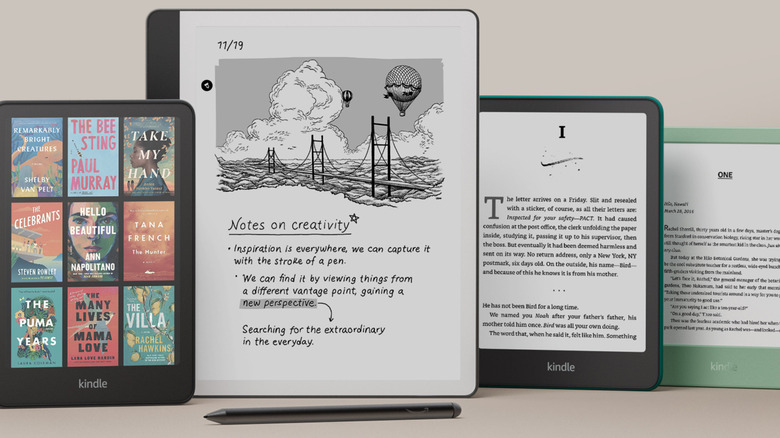Why Do Kindle Batteries Last So Much Longer Than iPad Batteries?
We may receive a commission on purchases made from links.
Amazon's Kindle and Apple's iPad may look like similar-sized rectangular slabs at first, but that's where their similarities end. They're especially different in their power consumption. On one hand, you have the iPads, like the M4 series chip-powered 13-inch iPad Pro, which Apple claims lasts up to 10 hours of usage for web browsing or video playback. That's impressive, for sure. But then you look at the e-reader, and the numbers become almost comical in comparison. The latest Kindle Paperwhite boasts a battery life of up to 12 weeks on a single charge. Even the new Kindle Colorsoft Signature Edition — the first Kindle with a color display – lasts up to eight weeks. So, what's the secret sauce? It all comes down to the screen.
iPads use vibrant LCD or OLED screens that are perfect for watching movies and playing games. These work by constantly shining a light through a panel of pixels to create an image. This continuous backlighting consumes a lot of power. Kindles, however, use a completely different tech called E-Ink. An E-Ink screen only draws power when the image on the screen changes. It uses millions of microscopic capsules containing pigmented chips to work. Typically, these chips are white and float around in a dark liquid dye. An electrical charge zaps the capsules to move the white chips up or down, forming the text you see. Once the page is set, it requires literally no energy to stay there. It's essentially permanent until you turn the page.
The incredible efficiency means E-Ink screens can use 50 to 100 times less power than their LCD counterparts. Of course, it also helps that the iPad's comparatively power-hungry chips are built to handle hundreds of applications, while the Kindle's processor is just happily focused on turning pages.
Other benefits beyond battery life
E-Ink displays also bring a whole suite of other perks to the table beyond all that battery life. The big one is eye comfort. These screens are designed to look like actual ink on paper, which means they don't blast light into your eyeballs. This drastically reduces the eye strain that many feel from staring at LCD or OLED screens. A key part of this is the lack of blue light, which, as Harvard Medical School points out, can mess with your sleep patterns and cause fatigue.
This paper-like quality also means E-Ink is king in bright sunlight. While an iPad screen becomes a reflective mess outdoors, an E-Ink display remains perfectly readable, just like a real book. These devices are also fantastically portable, with many being lighter than a single hardcover novel. So you can basically carry a whole library with ease on your Kindle, in a host of file formats. There's also the benefit of focus. E-Ink readers are generally purpose-built for reading and writing, freeing you from the endless notifications that plague multi-purpose tablets.

